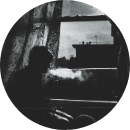Read the following passage and mark the letter A, B, C, or D on your answer sheet to indicate the correct answer to each of the questions from 43 to 50.
Carbon dating can be used to estimate the age of any organic natural material; it has been used successfully in archeology to determine the age of ancient artifacts or fossils as well as in a variety of other fields. The principle underlying the use of carbon dating is that carbon is a part of all living things on Earth. Since a radioactive substance such as carbon-14 has a known half-life, the amount of carbon-14 remaining in an object can be used to date that object.
Carbon-14 has a half-life of 5,570 years, which means that after that number of years, half of the carbon- 14 atoms have decayed into nitrogen-14. It is the ratio of carbon-14 in that substance that indicates the age of the substance. If, for example, in a particular sample the amount of carbon-14 is roughly equivalent to the amount of nitrogen-14, this indicates that around half of the carbon-14 has decayed into nitrogen-14, and the sample is approximately 5,570 years old.
Carbon dating cannot be used effectively in dating objects that are older than 80,000 years. When objects are that old, much of the carbon-14 has already decayed into nitrogen-14, and the miniscule amount that is left doesn’t provide a reliable measurement of age. In the case of older objects, other age-dating methods are available, methods which use radioactive atoms with longer half-lives than carbon has.
The word “it” in paragraph I refers to________.
A. carbon dating
B. the age
C. any organic natural material
D. archeology












